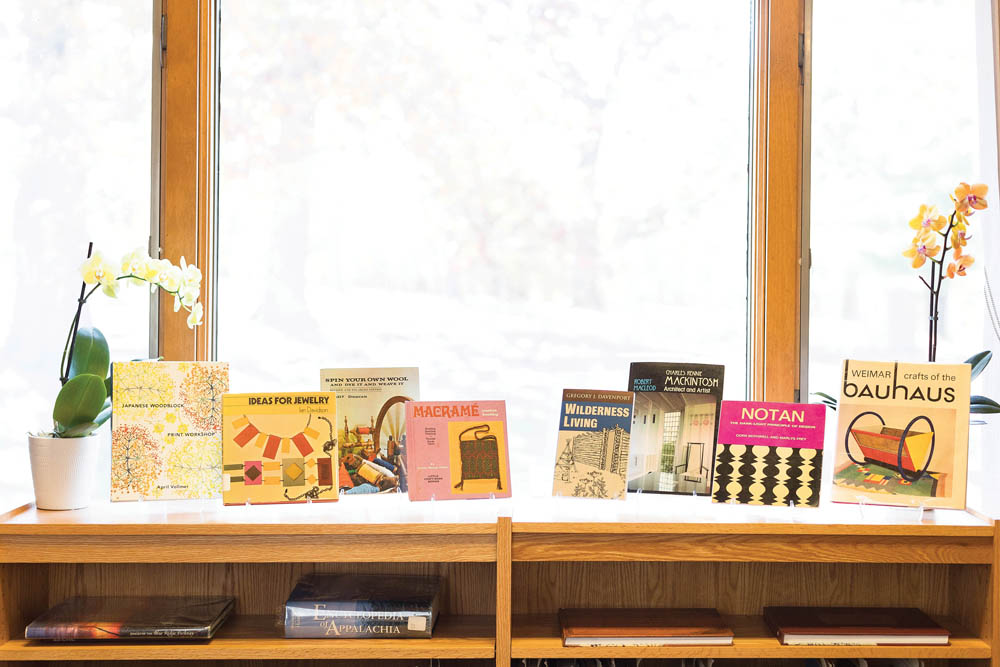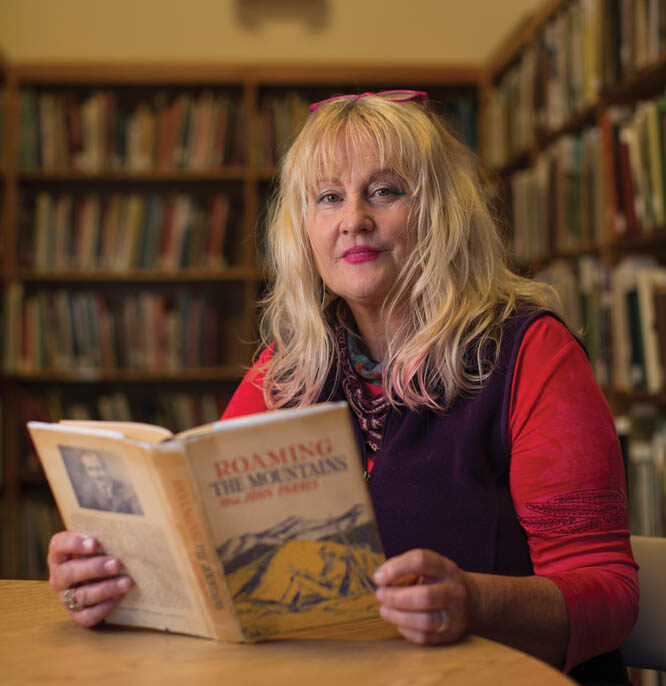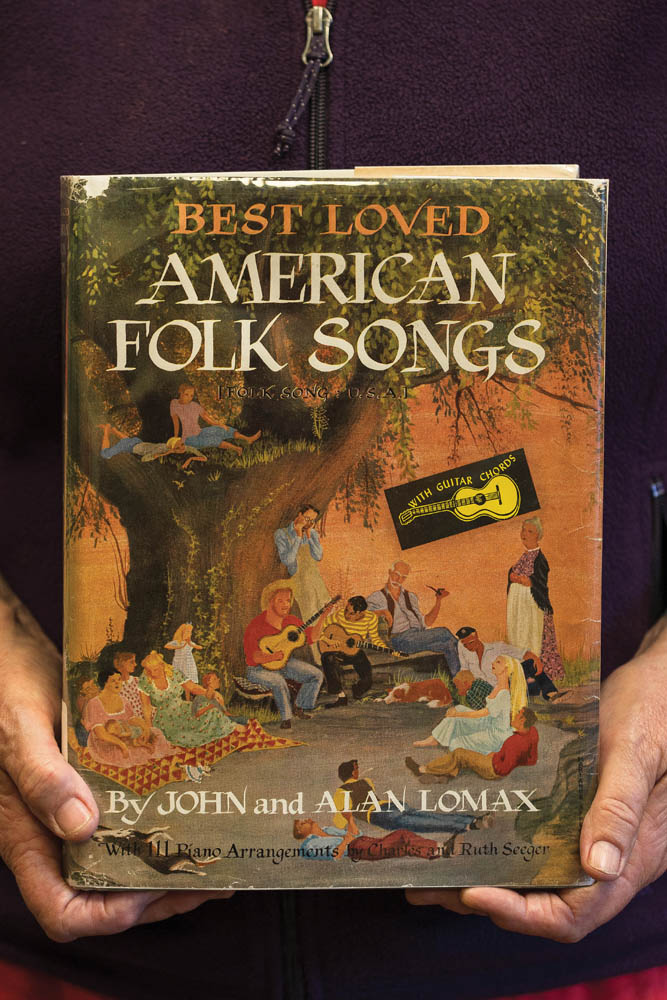
There are few places in the world where you can learn how to shear Suffolk sheep, make mirthful marionettes, and carve statuettes of wildfowl all in a single afternoon. Luckily, one of those places happens to be the Robert W. Gray Library.
Located inside the Folk Art Center on the Blue Ridge Parkway, this resource hub is home to more than 20,000 volumes of books, exhibition catalogs, periodical titles, and other texts related to traditional and contemporary crafts, particularly those with a Southern Appalachian bent.
“We have books that inspire, show how to create something, provide a historical context, describe the region of the Appalachians, and much more,” lists Janet Wiseman, education director of the Southern Highland Craft Guild, which administers the Folk Art Center and other regional craft venues.

The Robert W. Gray Library in the Folk Art Center, presided over by Southern Highland Craft Guild Education Director Janet Wiseman, contains vintage craft manuals galore, including editions of the Foxfire books that gained popularity in the 1970s.
According to Wiseman, the library is named in honor of the late Robert W. Gray, who served as executive director of the Guild from 1961 to 1980. During his tenure, Gray fought hard to raise the funds needed to build the Folk Art Center.
In 1980, the 30,000-square-foot structure — which included a library on its second floor — opened to the public. But the Guild began collecting texts some 40 years earlier, when founders Frances Goodrich and Allen Eaton donated books to the cause. In the decades since, regional makers have continued adding to the shelves, affording what Wiseman describes as a “diverse and eclectic” compilation of resources.


Browsing the library today, one can find everything from a meticulous manifesto on metal crafting to an instructional pamphlet teaching “little folks” (aka kids ages six to nine) how to work with wood. The library contains resources on a wide menagerie of fiber-art topics, such as dyeing wool using black-walnut hulls and embroidering lingerie with lace. “There are more fiber books than any other media,” Wiseman confirms.
However, many visitors flock to the Foxfire volumes, a beloved series of books chronicling the stories and customs of Appalachia. (The Foxfire books grew out of a quarterly magazine published in North Georgia and first gained traction in the back-to-the land movement of the 1970s.) A 1966 anthology of folk songs is another popular pick.
Of course, it’s worth noting that these materials don’t circulate. That is to say, you can’t bring a stack of sheep-husbandry books back to your pasture. However, visitors are welcome to pull up a chair and spend a few hours reading. Wiseman just asks that visitors leave technology out of the mix.
“In my opinion, there must be places people can be without being tied to a computer screen,” she says. “It’s extremely important for us as humans to be able to separate ourselves from the digital world and immerse [ourselves] in the peace that a real book and library can induce.”
The Robert W. Gray Library is located on the second floor of the Folk Art Center (Milepost 382, Blue Ridge Parkway). The library is open seven days a week, 10am-5pm. Librarians are present Monday through Friday to assist users. For more information, visit southernhighlandguild.org.
